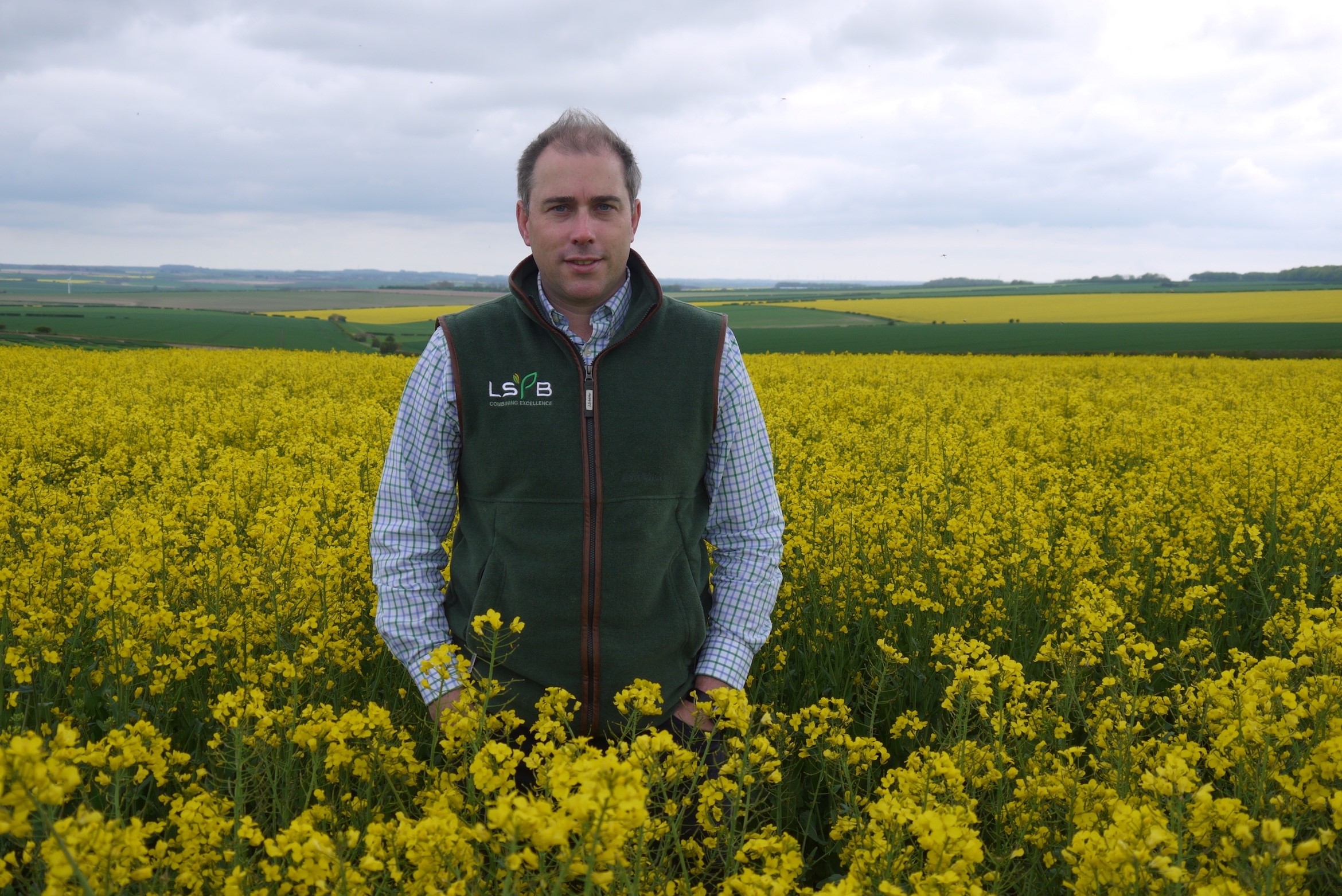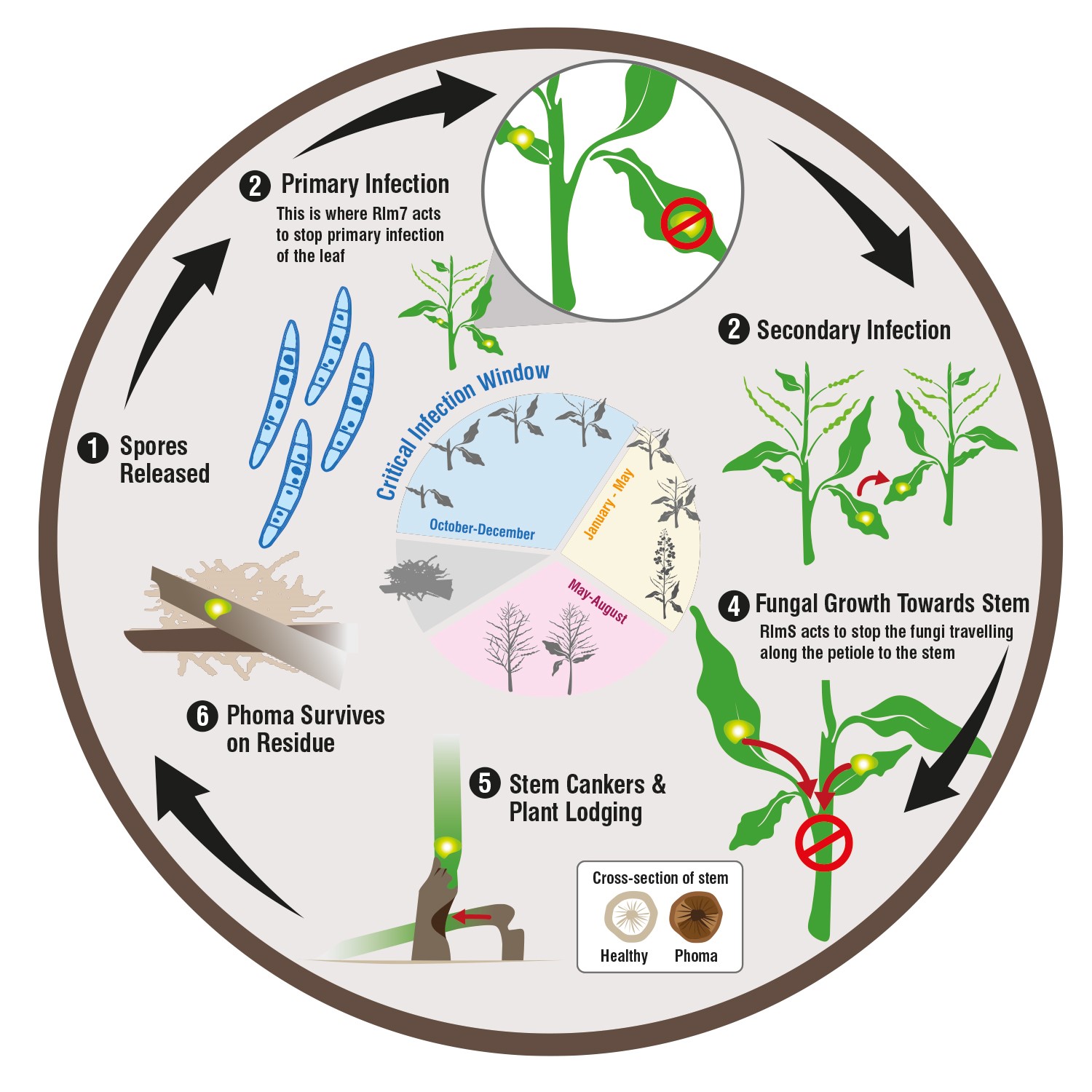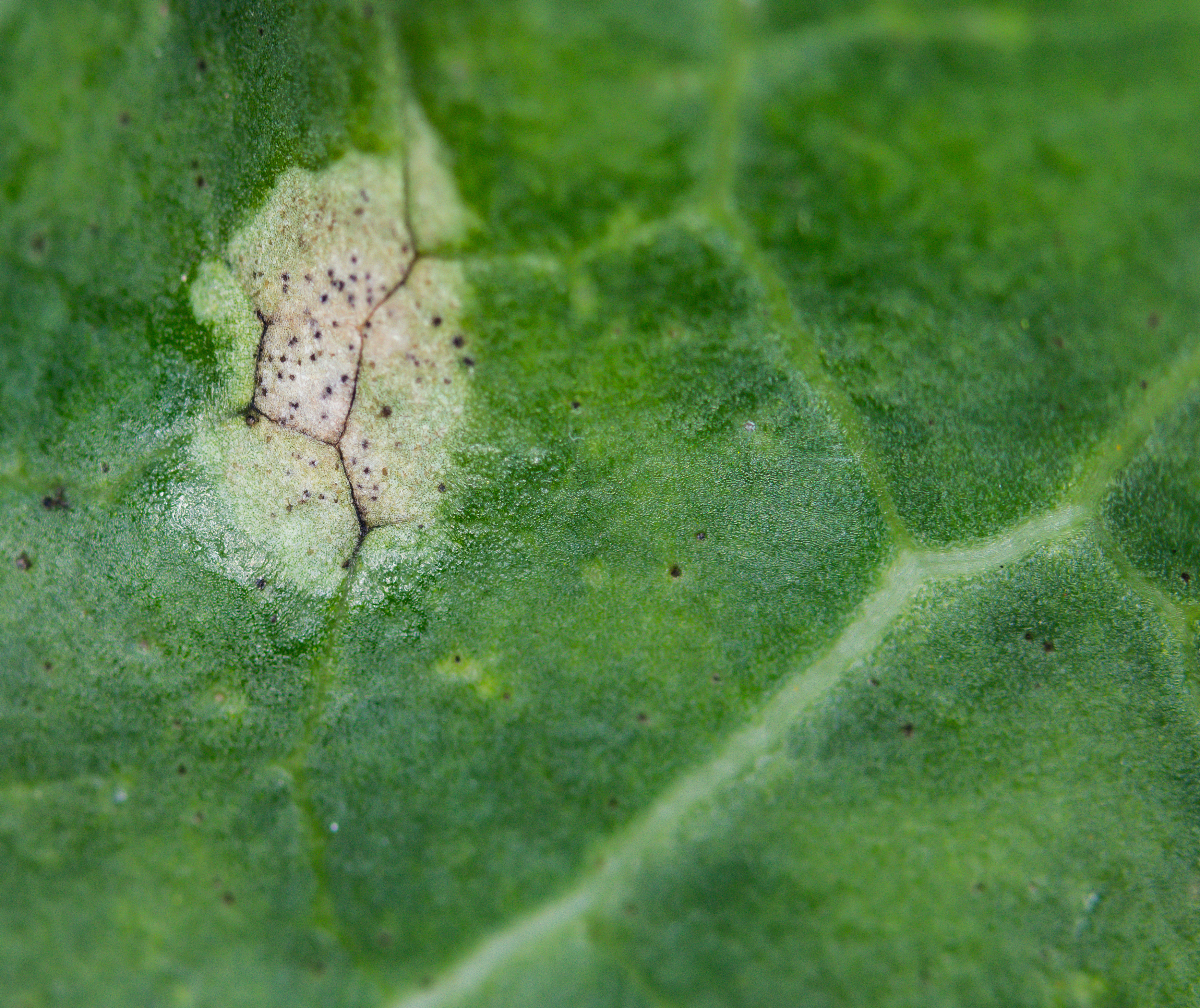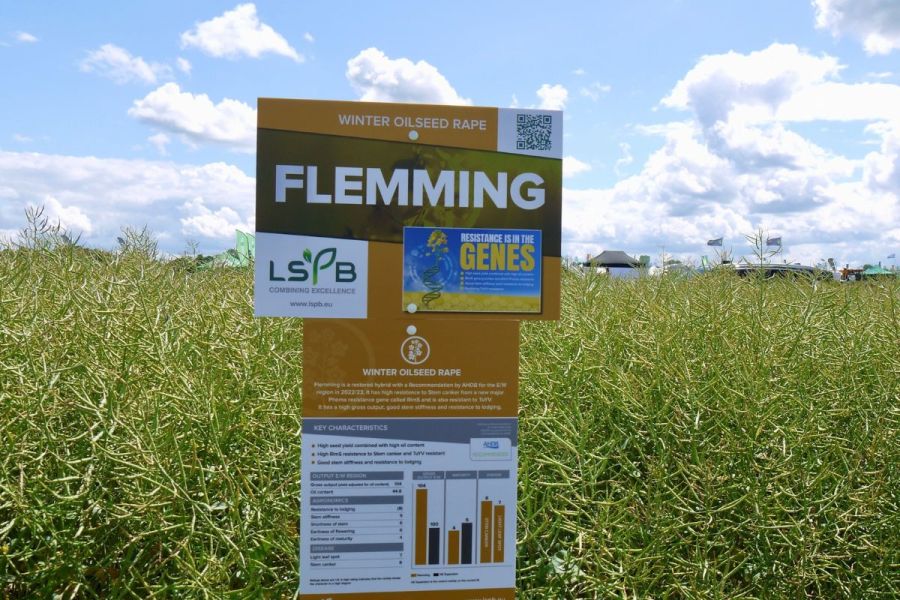After more than 20 years in development, a brand-new resistance gene against phoma has been brought to market in the form of a high yielding, robust, oilseed rape variety. CPM reviews Flemming.
To discover a new ‘R’ gene at such an important time is great for the industry.
By Charlotte Cunningham
The Rlm7 gene has long been the cornerstone of phoma resistance in oilseed rape, but just like chemistry, an over-reliance on any kind of protection is likely to lead to breakdowns in efficacy somewhere along its lifespan.
Foreseeing this challenge, LSPB has been working away on breeding a new resistance gene over the past 20 years. And now, with reported breakdowns of Rlm7 in Europe, the new RlmS gene could offer real, timely potential for OSR growers.
To put this breakdown into context, 2020 studies carried out by Marie-Hélène Balesdent in France showed that Rlm7 is losing its efficacy – with only 20-30% non-virulent races identified from 240 races, analysed across eight trial sites. In contrast, the new RlmS gene proved to be 100% effective.
However, it’s one thing to create a new gene, but entirely another to be able to deliver that in a package which comprises yield, good agronomy traits and robust resistance against disease. Nevertheless, LSPB reckons it has cracked the code with newly recommended variety, Flemming.

A new source of resistance marks an important development for the continued genetic protection in the fight against phoma, says Chris Guest.
“Following two years of National List trials, Flemming was a candidate last year and demonstrated some really strong performance, particularly in the East and West trials,” explains LSPB managing director, Chris Guest.
So looking at the stats, how does Flemming stack up? Flemming is a hybrid type and in the RL variety commentary, AHDB said the variety has given a high treated gross output in the East/West (104) and has a high resistance to lodging (8, based on limited data) as well as being very stiff stemmed at maturity (9). Other agronomic characteristics include a plant height of 156cm and a score of 4 for earliness of maturity.
Where is does fall down slightly is its lack of pod shatter resistance. However, Chris says that although pod shatter has become a more publicised trait over the past few years as it features in a number of the widest grown varieties, there’s still a large acreage grown without the resistance.
In terms of disease resistance, while the RlmS gene and the phoma resistance it brings grabs the headlines, Flemming also boasts a high resistance to light leaf spot, with a score of 7. “Flemming is what we’re calling a ‘next generation’ hybrid because as well as RlmS resistance, it’s stacked with traits like robust protection against light leaf spot and stem canker, as well as TuYV resistance,” notes Chris.
“The unique phoma resistance is also associated with strong overall plant health, and the gene has especially good stem resistance which we believe also brings better protection against the increasingly important pathogens of verticillium and sclerotinia.”
In the field, Chris says that Flemming is quite different in its growth type. “It’s vigorous and has a very prostate growth habit in the autumn and therefore doesn’t get proud too early going into the winter. In the spring it’s a little later to kick-start, however it quickly catches up with other varieties, with strong hybrid vigour to grow through the worst of larval pressures.”

The fact that Flemming doesn’t get going as quickly in the spring might be particularly useful for areas prone to late frosts, reckons Stuart Rowley.
This is a trait particularly valued by Stuart Rowley, managing director at grain and seed merchants, Mortimers. “I first saw Flemming at the LSPB demo plots in 2021 and more recently in the field at the Warter Priory Estate in Yorkshire.
“I liked the fact it is a vigorous hybrid type but that it also doesn’t get going too fast in spring – my feeling is that it should work particularly well for those with ground in some of the late cold spots around us. I also think that the medium maturity of Flemming will help spread workload around a bit in what can be busy, time-pressured parts of the year.”
The yield is also a strength of the variety, adds Stuart. “Admittedly, it would be nice to have pod shatter resistance as well, but I’m excited to see how the aforementioned characteristics – combined with the phoma resistance from the new RlmS gene and TuYV resistance – come together at harvest time.”
While Flemming and the other new RlmS varieties offer a useful alternative strategy, Chris stresses there’s still very much a place – and requirement – for Rlm7 varieties to be grown.

How RlmS protects OSR from phoma infections. (Source: LSPB)
“It’s important to stress that we’re not saying that Rlm7 is breaking down in the UK in the same way as we’re seeing in France. However, work from Innovate UK does suggest that something is coming by means of a reduction in the efficacy of the Rlm7 gene.
“My own feeling, and one shared by many in the industry, is that the OSR acreage is going to be considerably up this autumn, so optimising varieties that use both resistance genes will be fundamental in protecting the longevity of both Rlm7 and RlmS. A new source of resistance marks an important development for the continued genetic protection in the fight against phoma.”
Looking to the future, candidate varieties Murray and Vegas are both looking promising too, adds Chris. The two varieties are being put through their paces in official trials at present, but he says that the preliminary results from both official and private sites are highlighting huge promise in the varieties. “They are very high yielding with exceptional RlmS phoma resistance, good light leaf spot scores, mid-maturity and are very vigorous – particularly in the spring.”
Murray in particular looks to be a ‘one-to-watch’ with an East/West gross output of 109, according to the AHDB Candidate List data. Vegas only sits slightly below, with an equally impressive East/West gross output of 108. Watch this space…
View from the field
Despite its recommendation for the East/West, Flemming is also showing some real potential further north. Vanessa Fox is the independent agronomist at the 3927ha Warter Priory Estate in East Yorkshire. Last year, the estate took a punt on new variety Flemming and so far, Vanessa says both she and the farm manager, Mark Richardson, have been impressed with its performance.

The unique phoma resistance is also claimed to be associated with strong overall plant health.
Though, thankfully, cabbage stem flea beetle hasn’t had too much of an impact on the estate, the ability to get up and away at establishment is still an important priority, explains Vanessa. “It was drilled on 16 September last year, after spring barley. The farm is about 150m above sea level, and this was a really late drilling slot for such a northern site. However, it showed a lot of autumn vigour – it got away quickly and kept growing well over the winter. Finding something that grows well at that height and location is great.” This vigour continued in the spring, where the Flemming got going again well, she adds.
When the variety was selected, it was the strong disease package that won the farm over, says Vanessa. “It scores an 8 for stem canker which is really where we want to be in terms of robustness. What’s more, the new RlmS gene for phoma is also really beneficial. I think it’s important that varieties move forward and incorporate new strategies and genes, and anything which can help boost good disease resistance is great for reducing the reliance on fungicides.”
The effects of the absence of pod shatter remains to be seen, and will be monitored closely at harvest time, but Vanessa says it’s important to find balance when choosing a variety. “No variety is going to have everything – it’s all about weighing up the balance of things and what you see as must-haves as well as what you’re happy to go without. At the moment, the crop is looking very well and we’re looking forward to seeing its performance in the combine at harvest time.”
Breeding new resistance
The RlmS gene is the product of 20 years of innovation and development by LSPB’s exclusive shareholder, NPZ.
It was a lengthy journey, and one filled with challenge, starting with the fact that no molecular marker was available to confirm the resistance in RlmS at the time of discovery, says Chris. “Ultimately after discovery, resistance was introduced via turnip rape into spring OSR. It then took another four/five years to put this material into a winter OSR variety without bringing with it any undesirable traits and at the same time, ensuring the high level of resistance was maintained.”
This work reached its crescendo in 2015 when NPZ was able to register the first winter OSR to contain the RlmS gene, with further developments taking place over the years that followed, leading to the launch of both Flemming and LSPB’s other RlmS-containing recommended variety, Respect.
“Historically, we’ve probably not been loud enough about who we are and who our shareholders are, meaning the innovation we’ve brought to the UK hasn’t always been seen and recognised as ours,” notes Chris. “We are 100% owned by NPZ, who have operations all over the globe and their own innovation department, meaning we can put ourselves right at the forefront of game-changing developments, which in conjunction with our breeding team here in the UK is delivering significant improvements to the UK market through genetics.
“To discover and bring to market a new ‘R’ gene at such an important time is great for the industry.”
Flemming at a glance

This article was taken from the latest issue of CPM. For more articles like this, subscribe here.




